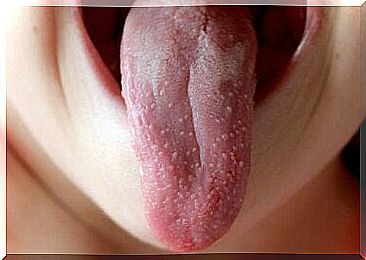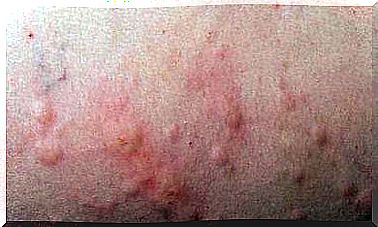Is Scarlet Fever Contagious?
Scarlet fever is a contagious disease that mostly affects children, with symptoms such as fever, rash and redness of the tongue. We will tell you more about it and how it is transmitted.

Do we know if scarlet fever is contagious? Scarlet fever, as it is also called, is an acute infectious disease caused by the bacterial species Streptococcus pyogenes . According to scientific studies, of the 74 species that make up the genus Streptococcus, the named microorganism is one of the most virulent for humans.
This bacterium causes suppurative and non-suppurative pathologies in our species, such as pharyngitis, cellulitis, necrotizing fasciitis and rheumatic fever, among many others. This is why it becomes essential to focus on this pathogen from a clinical point of view. Here we tell you everything you need to know about scarlet fever and its ability to spread.
On the distribution of scarlet fever
According to epidemiological publications, scarlet fever is a pathology that mainly affects children. Below are some data that put the situation of this disease in perspective worldwide:
- Asymptomatic Streptococcus pyogenes infections are present in 3 to 26% of healthy children in a given population.
- Of infants with sore throats, up to 58% may be infected with the bacteria.
- S. pyogenes is the streptococcus species most associated with epidemics. It is common for these cases to occur because of contaminated food.
- An increase in scarlet fever epidemics has been documented in recent decades. One example is Vietnam in 2009, with over 23,000 documented cases.
As can be seen, although it is a pathology associated with ancient times, this pathogenic microorganism is still present in our society. This is why it is useful to know its modes of transmission. We present them to you below.

What is scarlet fever?
As we have already said, scarlet fever is a disease caused by infection with Streptococcus pyogenes meningitis. According to the studies already mentioned, this bacterium is able to produce exotoxins and super antigens (causing exaggerated responses of the immune system), its action on the human body therefore covers a wide range of symptoms.
The sites of colonization of bacteria are the mucous surfaces and, to a lesser extent, the skin. Websites like that of the National Library of Medicine in the United States report symptoms associated with scarlet fever:
- Onset of infection with fever and sore throat
- Primary-looking rash on the neck and chest, which then spreads to the whole body
- Swollen lymph nodes in the neck
- Other secondary symptoms, such as headache and muscle pain, nausea, chills, and redness and swelling of the tongue.
It should be noted that the most obvious symptom of this disease is the appearance of the rash. While the first signs appear on the first or second day after infection, the rash usually occurs after 3 to 5 days and lasts for more than a week.
Is scarlet fever contagious?
According to professional pediatric organizations such as Kidshealth, scarlet fever is highly contagious. Both direct contact with the affected surface (in the case of patients with impetigo, another manifestation caused by this bacteria) and inhalation of microparticles (coughing and sneezing) from a sick person can spread the infection to a patient. healthy.
Also, it should be noted that this microorganism survives on inanimate surfaces for up to four weeks. Therefore, touching any material or food that has come into contact with a sick person and then putting your hands in your mouth is a potential hazard.
Official bodies, such as the Centers for Disease Control and Prevention (CDC), warn that one of the most common causes of scarlet fever outbreaks is food mishandling. However, experts don’t believe the bacteria can be transmitted through pets or toys, as long as disinfection is adequate.
Period of contagion
The contagion period lasts as long as the symptoms. Despite this, it is a mild infection that goes away easily with the application of antibiotics. It should be noted that after 48 hours of treatment, the patient is no longer contagious.
How can you prevent the spread of scarlet fever?

As we have seen, it is a mild but highly contagious disease that is transmitted by unsanitary surfaces or by microparticles of saliva from sick people. Therefore, good hygiene habits are the first line of defense against scarlet fever. Here are some guidelines to follow:
- In sick people, cover your nose and mouth with a tissue when you sneeze.
- Wash your hands frequently with soap and water for at least 20 seconds.
- Keep the affected person’s utensils limited to their use.
- In places where outbreaks occur, follow a strict food and surface hygiene protocol.
Its spread
Scarlet fever is a highly contagious infection caused by a microorganism that is very common in the general population. Despite everything, it is a mild infection which, thanks to antibiotic treatment, disappears within a few days.
Although the patient may have complications, such as pneumonia or sinus infection, these are not common. However, when a rash appears and is associated with a fever, a visit to the doctor is mandatory.









